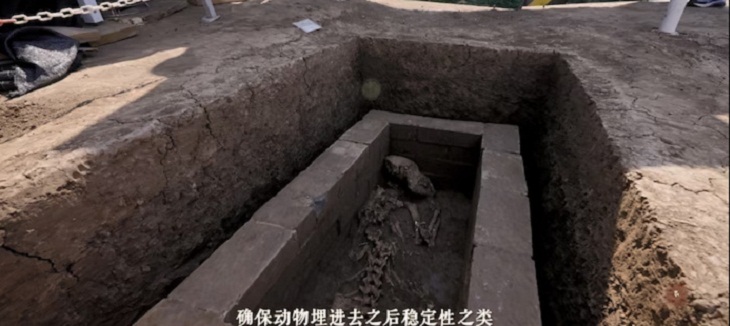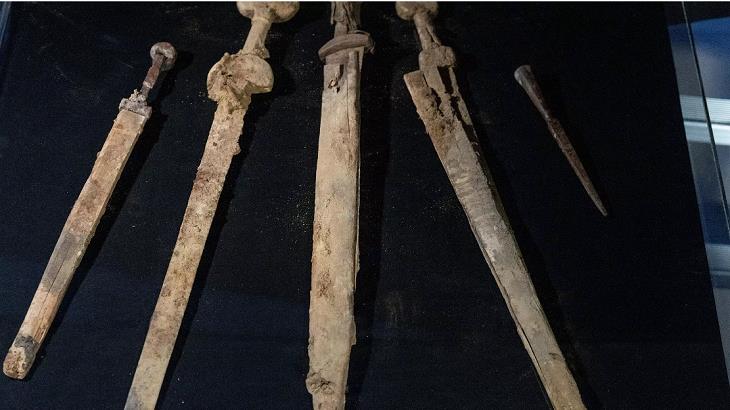
An unknown Maya city on Mexico's Yucatán Peninsula was discovered in June of this year using lidar, or Laser Detection and Ranging. This cutting-edge approach involves airborne devices that fire millions of laser pulses per second, breaking through cover like forest canopies to reveal hidden features like historic Mississippi River bends and Battle of the Bulge shelters.
Researchers exploring the area on foot have named the ancient city Ocomtn, a term borrowed from the Yucatec Maya language that refers to the site's massive stone columns. Experts suggest it served as a key hub from around A.D. 250 until abandonment during the Mayan civilization's collapse between 900 and 1000, which was possibly caused by a mix of drought and internal disputes. Spanning over 120 acres, Ocomtún boasts plazas, ball courts, opulent residences, elevated platforms, ritual altars, and pyramid temples, with the tallest remaining pyramid standing at a towering 80 feet (24.3 m)!

Recently, archaeologists in China discovered the skeleton of a giant panda inside an ancient tomb of an emperor, revealing a symbolic story of the royal burial rituals that have been practiced in China for over 2,000 years. The panda was discovered in a group of animal sacrifice pits on a hill near Emperor Wen of the Han dynasty, who ruled from 180 to 157 B.C.
The panda's head was pointed eastward, in the direction of Emperor Wen's burial location. The excavation was carried out on the outskirts of Xi'an, which is currently acknowledged as the capital of Shaanxi Province and a former long-standing capital of China.
“The animal sacrifice pits that we excavated this time could be a replica of the royal gardens and farms in western Han dynasty,” Hu Songmei, an archaeologist at the Shaanxi Academy of Archaeology and part of the team that excavated the skeleton, wrote in a paper that she co-authored with two colleagues, which was published last week in the journal Chinese Social Sciences Today.
This August, archaeologists uncovered the submerged ruins of a 2,000-year-old temple near Naples, believed to be of Nabatean origin. The Nabateans were highly respected desert traders who catered to the Roman elite, providing them with exotic goods. Originating from Jordan and Saudi Arabia, they are credited with founding Petra. This temple, now underwater, once graced the shoreline of Puteoli, an ancient port located west of Naples. It was submerged during volcanic activity, with Mt. Vesuvius looming in the background.
The underwater ruins contain a Nabatean god's altar, and archaeologists believe that the temple served as a "billboard" for Nabatean culture and as a place of worship. According to a Latin inscription on a piece of marble, "Zaidu and Abdelge offered two camels to [the god] Dushara," which could have been a sacrifice offered to assist trade negotiations or as a blessing for a perilous sea voyage.

Archaeologists discovered four remarkably well-preserved swords dating from the first to third centuries A.D. in a cave in the Judean Desert in June. This era marked a period when the region served as a haven for Jewish rebels opposing Roman rule. Despite the usual degradation of wood and leather, the dry conditions acted as a preservative, allowing the swords to retain their hilts and scabbards intact.
The recovery of the swords began when researchers discovered the iron tip of a Roman javelin, known as a pilum, and shards of handmade wood in a cave southeast of Jerusalem, near the Dead Sea. Subsequent excavation of the cave with metal detectors confirmed the presence of four swords strategically trapped behind stalactites. According to popular belief, these weapons were secretly hidden by Jewish rebels during the Bar Kokhba revolt (A.D. 132-136), most likely seized from a battlefield or pilfered from Roman military troops.
Archaeologists are ecstatic about the extraordinary preservation of the wood and leather, which could hold the key to determining the origin and timeline of the swords.
A recent study has successfully dated and attributed the origin of engravings discovered on a cave wall in France as the earliest examples of artistic expression by Neanderthals. Found in La Roche-Cotard cave in the Centre-Val de Loire region of France, the non-figurative markings on the wall, interpreted as finger-flutings, were thoroughly analyzed using plotting techniques and photogrammetry. It is believed that Neanderthals created these engravings approximately 57,000 years ago, before the arrival of Homo sapiens in the region, based on an optically stimulated luminescence dating of cave sediments.
This ground-breaking discovery not only highlights Neanderthals' creative ability but also reveals an extensive variety of behaviors and activities in their cultural repertoire. The study's findings, supported by the exclusive presence of Mousterian stone tools in the cave, firmly establish Neanderthals as the creators of these symbolic expressions.
Related: These Archaeological Finds Reveal Incredible Stories
The world's oldest flush toilet, estimated to be approximately 2,400 years old, was discovered by archaeologists in February. The lavatory and its unique bent pipe were discovered last summer in the ruins of a palace at the Yueyang archaeological site in Xi'an, China, and are believed to have served as a status symbol for ancient China's aristocracy.
Researchers who participated in the excavation, including Liu Rui, believe that this ingenious toilet design was likely designated for the exclusive use of a privileged few among the ruling class. The complicated design, according to Liu, suggests a system in which servants would assist in pouring water after each use.
In recent years, the Scan Pyramids project has been instrumental in uncovering the mysteries of the Great Pyramid of Giza using cutting-edge technology such as infrared thermography and cosmic-ray imaging. Among its most recent findings is a 30-foot passage near the main entrance, which has sparked speculation about its intended role.
Mostafa Waziri, president of Egypt's Supreme Council of Antiquities, suggested that the structure could be used to spread weight around the entrance or enable access to undiscovered rooms. According to an article published in the scientific journal Nature, further research into the hallway could help scientists better understand how the pyramid was built.